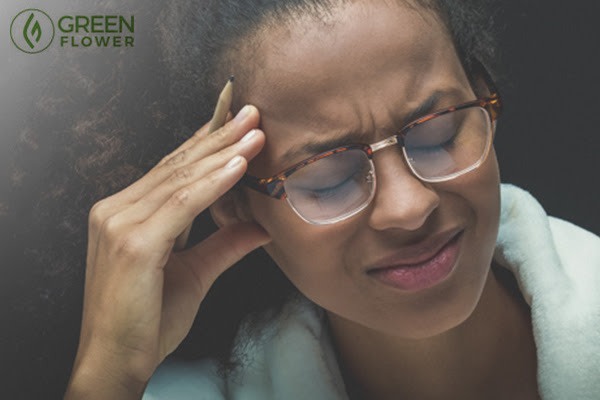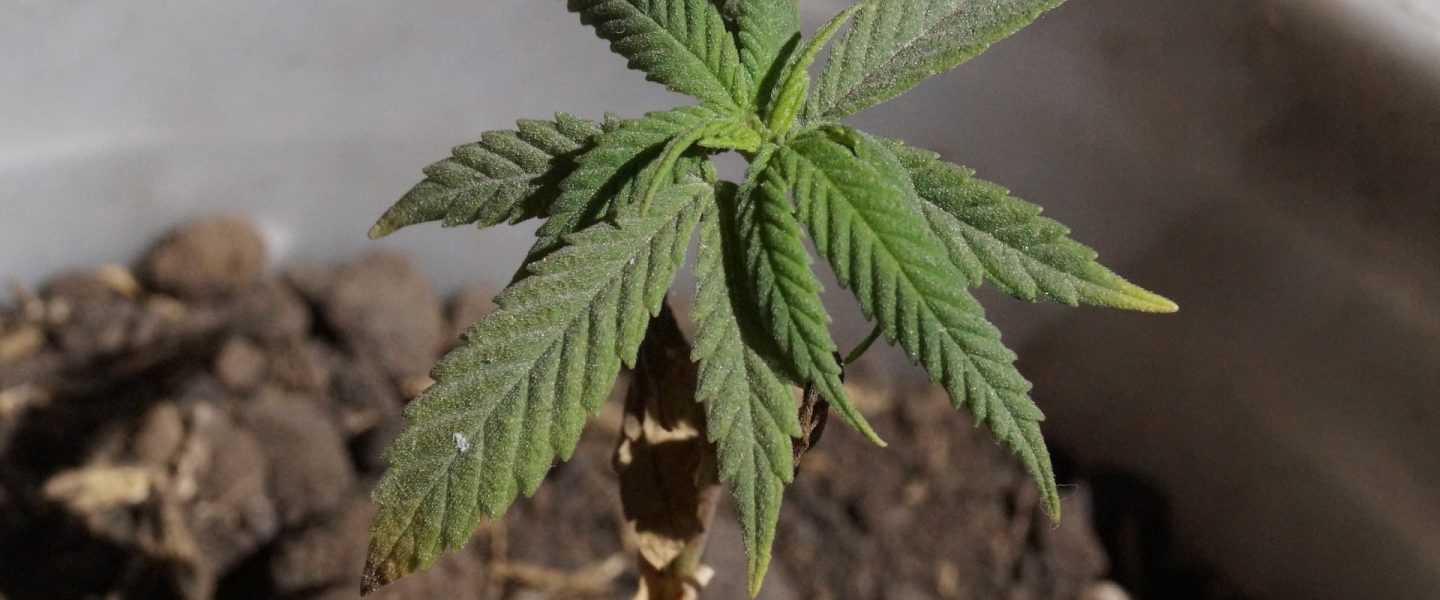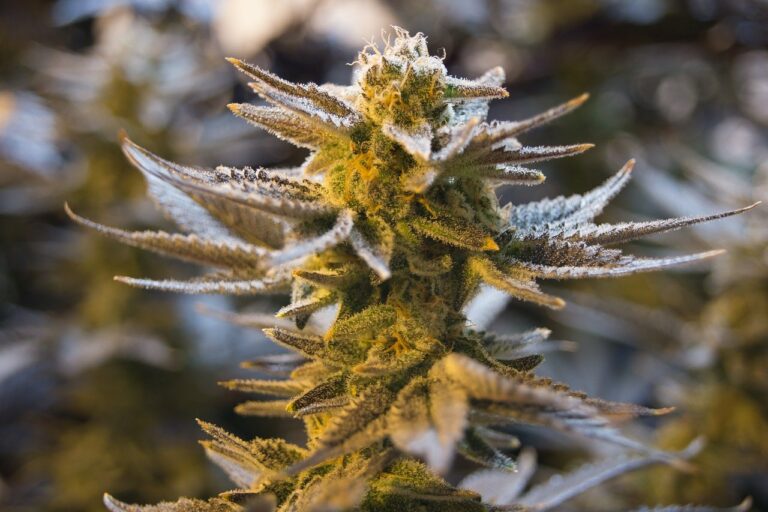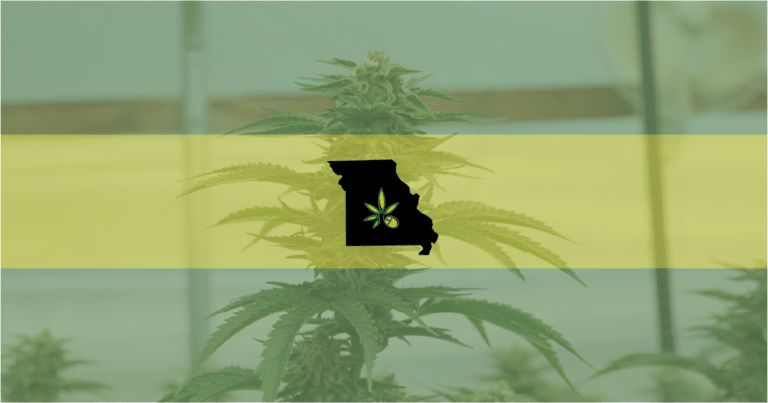
Does cannabis help with migraines?
Written by:Anna Wilcox, Green Flower Media
Anyone who has experienced a migraine knows that the condition can cause severe disruptions in daily living.
An estimated 12 percent of the population struggles with migraines and thus far, the cause remains unknown.
With no known cause, effective treatments can be difficult to find.
Yet, there may be some hope. Interest is brewing in an ancient and often overlooked remedy: cannabis.
Cannabis has been a headache treatment for centuries.
Historical records dating back to the six and seventh centuries made reference to cannabis as a headache treatment. Doctors during the nineteenth century also prescribed the herb for severe headaches.
But does cannabis really help migraines? Unfortunately, no large-scale clinical research has been done.
However, emerging preclinical evidence is promising. Promising enough for researchers to give this medicinal herb serious reconsideration.
What is amigraine?
More than just a bad headache, migraines are the results of a complex and mysterious condition with neurological roots.
In fact, migraines and seizures have a lot in common.
While at least half of all people get headaches now and again, leading theorists suggest that a migraine headache is akin to an electrical storm inside the brain.
Research suggests that migraines are triggered by the overstimulation of brain cells followed by a spreading electrical depression.
Basically, brain cells get too excited and are subsequently slowed down by an electrical wave.
This slow down is theorized to be the root cause of migraine pain. A sudden constriction of blood vessels that surround the brain is also thought to contribute, along with changes in hormone levels.
Tension headaches often feel like a band of tightness around the head. Migraines, however, are different.
The headaches are often felt most strongly on one side of the head. Migraine pain can make it difficult to sit, stand, or move.
While the searing pain of a headache might be the grand event in a migraine, research suggests that migraines actually begin as early as a few days prior to pain.
Roughly 25 percent of migraine patients also experience “aura” shortly before a migraine.
This aura can alter vision, impair speech, and create numbness in the body. Migraines are often accompanied by nausea, vomiting, and stiffness in the neck. The headache can also cause sensitivity to light, sound, and certain smells.
Can cannabis helpmigraines?
Humankind has been turning to cannabis for thousands of years.
There are many theories on why cannabis may be helpful for migraines.
For one, emerging research suggests that migraine is one of several pathologies associated with a condition called “clinical endocannabinoid deficiency” (CECD).
CECD suggests that extremely low levels of endocannabinoids may contribute to a variety of different diseases, migraine being among the most qualified candidates.
Simply stated, your endocannabinoids are the human version of cannabis.
They are molecules similar to the active compounds in the cannabis plant, only they are created internally in the body rather than consumed from a plant source.
Some researchers are turning to endocannabinoids to better understand migraines. Spinal taps of migraine patients have revealed abnormally low levels of the endocannabinoid anandamide (AEA) in circulation. AEA is also coined “the bliss molecule” and is thought of as the human form of THC.
Interestingly, this molecule plays important roles in pain, cognition, nausea, mood, learning, memory, sleep, and more.
While it will take more research to discern whether or not CECD plays a central role in migraines, recent studies suggest that cannabis may be a particularly useful treatment for the condition.
A 2016 study published in Pharmacology examined the effects of medical cannabis on 121 migraine patients. The research found that medical cannabis reduced the average number of monthly headaches from 10.4 down to 4.6.
Given that migraines can last up to three days, this is a sizeable improvement.
In addition, early laboratory experiments have shown that tetrahydrocannabinol (THC) in cannabis, may be helpful in reducing the electrical depression that triggers migraine symptoms.

5 ways cannabis can helpmigrainesymptoms
Despite the theoretics, there are five major reasons why cannabis may be helpful in relieving migraine symptoms.
The plant may help migraine symptoms by:
1. Fighting inflammation
Migraine has been linked with excessive inflammation in the brain. In fact, some of the most common migraine drugs called triptans work by blocking inflammation-causing chemicals in the brain.
As luck would have it, cannabis contains potent anti-inflammatory compounds.
The two most notable are THC and cannabidiol (CBD).
Both of these chemicals are special compounds unique to cannabis called cannabinoids. Though, only THC produces euphoria. Scientists are currently studying these molecules as novel anti-inflammatory drugs.
2. Easing pain
One of the primary reasons patients seek medical cannabis recommendations is for the relief of chronic pain.
In fact, a 2016 survey of 271 medical cannabis patients in Canada found that 63 percent chose cannabis over prescription drugs. Of those, 30 percent favored cannabis over pharmaceutical painkillers.
3. Fighting nausea
Nausea and migraine go hand-in-hand. Medical cannabis is often recommended to cancer patients because of its powerful antiemetic properties. Emesis is a fancy term for vomiting.
Medical cannabis patients often use inhaled and oral cannabis to ease nausea symptoms.
4. Lifitng mood
Cannabis may help migraines by giving patients a mood boost. Mental health ailments like depression, mood, and personality disorders commonly coexist with migraines.
Some researchers suggest that during a migraine, levels of serotonin drop significantly. Serotonin a feel-good chemical implicated in depression. Sometimes, antidepressant medications are prescribed to people with chronic migraines.
As it turns out, cannabis compounds also engage with serotonin. In low doses, these compounds can boost the levels of this neurotransmitter. This is one of the reasons cannabis is thought to have antidepressant effects.
5. Sleep aid
Sometimes migraine pain can be so severe that sleep is out of the question.
Further, not getting enough sleep is considered a major migraine trigger.
A night of no sleep due to a headache only makes another one more likely.
Cannabis is a well-known sleep aid. Research has shown that it can help people fall asleep faster and stay asleep longer.
A good night’s sleep is critical for migraine recovery.
Best types of cannabis formigraines
There are three primary types of cannabis available to consumers.
Cannabis comes in cultivars that are either high in psychoactive THC, high in non-psychotropic CBD or contain a little of both cannabinoids.
THC can act as a direct replacement for the endocannabinoid AEA. AEA is the compound that was found to be deficient in spinal taps of migraine patients.
CBD works a little differently, but researchers suggest that it can boost the levels of natural endocannabinoids in the body.
Neither of these compounds alone have been tested in clinical trials in migraine patients.
However, it is not uncommon for patients to use either cannabinoid or both for pain relief. Anecdotal reports indicate that a balance of both seems to work best for most people.
Apart from this, there are a few different ways patients use cannabis for migraine relief. These include:
1. Inhaled cannabis
The 2016 study of medical cannabis patients mentioned above found that patients preferred inhaled cannabis as their primary emergency treatment and preventative tool.
Cannabis can be inhaled through both smoke and vaporization.
Low-temperature vaporization is thought to be one of the healthiest ways to consume the herb.
2. Topical cannabis
Topical cannabis refers to cannabis-infused creams, lotions, and balms.
Topical cannabis can be applied at the base of the neck during migraine to ease tension and stress in the region, which is often problematic during a migraine.
3. Raw dietary cannabis
There is no research on raw cannabis for the prevention of migraine headaches.
However, many medical cannabis patients with various ailments choose to add supplemental cannabis juices or smoothies into their daily routine.
“Raw” cannabis refers to plant material that has been taken fresh from the plant, like any other herb or leafy green.
Unlike cannabis that has been dried or heated, raw cannabis is not psychoactive. Instead, it contains various cannabinoid acids which are thought to have anti-nausea and anti-inflammatory effects.
4. Medical cannabis oil
Medical cannabis oil is a highly concentrated extract from the cannabis plant. It can also be found under the name Rick Simpson Oil (RSO).
Medical cannabis oil can be either high in THC, high in CBD, or both.
It is typically administered under the tongue by an oral syringe and rubbed into inner cheek or along the gumline.
When used sublingually, this type of oil has a very fast absorption.
Cannabis patients often experiment with this oil as a preventative and emergency treatment for various health conditions.
5. Edible cannabis
Edible cannabis refers to cannabis-infused foods. Those in need of powerful relief from pain may appreciate the heavy-handed nature of edibles.
Edibles provide a much stronger cannabis experience and produce profound analgesic effects throughout the body.
There are a few major downsides to edibles, however. The effects of a cannabis edible can take anywhere from 30 minutes to two hours to begin, which can make a dosing trick if you’re unfamiliar with the product.
If you need fast relief, edibles are not the best option.
In fact, in the aforementioned 2016 study of medical cannabis patients, migraine patients reported the most negative side effects from cannabis edibles.
These side effects included falling asleep and having too strong of a medicated effect.
In other words, the long-lasting effects of edibles can be great once you find your perfect regimen, however migraine patients may prefer inhaled cannabis.







